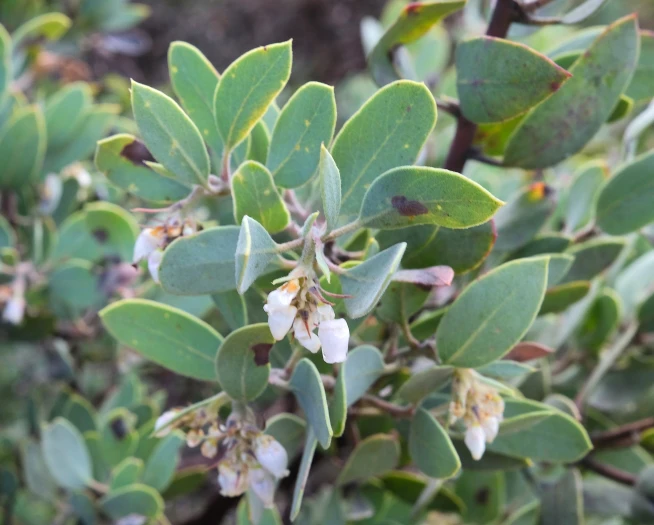Bishop Manzanita
(Arctostaphylos obispoensis)
Bishop Manzanita (Arctostaphylos obispoensis)
/
/

paulexcoff
CC BY-SA 4.0
Image By:
paulexcoff
Recorded By:
Copyright:
CC BY-SA 4.0
Copyright Notice:
Photo by: paulexcoff | License Type: CC BY-SA 4.0 | License URL: http://creativecommons.org/licenses/by-sa/4.0/ | Rights Holder: paulexcoff | Publisher: iNaturalist | Date Created: 2021-03-06T12:34:57-08:00 |























Estimated Native Range
Climate Requirements for Plymouth, United Kingdom
| This Plant | Your Site | Plant Suitability for Your Location | ||
|---|---|---|---|---|
| • Precipitation | 8" - 35" | 38" | Aquatic | Aquatic |
| • High Temp. | 69°F - 103°F | 68°F | OK, but your summers are milder than normal for this plant | OK |
| • Low Temp. | 31°F - 44°F | 38°F | Your winter temperatures are normal for this plant | Excellent |
This plant may not grow well at your location - your precipitation is too high.
Summary
Arctostaphylos obispoensis, commonly known as Bishop Manzanita or Serpentine Manzanita, is an evergreen shrub or small multi-trunked tree endemic to the southern Santa Lucia Mountains in California. It is specifically adapted to serpentine soils within chaparral and closed-cone pine forest habitats, thriving at elevations of 200 to 3,120 feet. Bishop Manzanita can reach a height of 3.3 to 13.1 feet and is notable for its woolly branches and leaves. During the winter to early spring, it produces dense clusters of white urn-shaped flowers that are attractive to pollinators. The red round waxy drupes that follow are a food source for local wildlife.
Bishop Manzanita is valued for its ornamental qualities, including its interesting form, attractive bark, and showy flowers. It is used in native plant gardens, as a specimen plant, and for erosion control on slopes. This species prefers full sun to part shade and requires well-drained soils; it is particularly drought-tolerant once established, making it suitable for xeriscaping. While it is generally low-maintenance, it can be susceptible to fungal diseases in poorly drained soils. Gardeners should be aware that it may not thrive outside its native serpentine soil conditions.CC BY-SA 4.0
Bishop Manzanita is valued for its ornamental qualities, including its interesting form, attractive bark, and showy flowers. It is used in native plant gardens, as a specimen plant, and for erosion control on slopes. This species prefers full sun to part shade and requires well-drained soils; it is particularly drought-tolerant once established, making it suitable for xeriscaping. While it is generally low-maintenance, it can be susceptible to fungal diseases in poorly drained soils. Gardeners should be aware that it may not thrive outside its native serpentine soil conditions.CC BY-SA 4.0
Plant Description
- Plant Type: Shrub
- Height: 3-6 feet
- Width: 6-10 feet
- Growth Rate: Slow
- Flower Color: White
- Flowering Season: Spring, Summer, Winter
- Leaf Retention: Evergreen
Growth Requirements
- Sun: Full Sun, Part Shade
- Water: Low
- Drainage: Medium, Fast
Common Uses
Bee Garden, Drought Tolerant, Low Maintenance
Natural Habitat
Endemic to serpentine soils within chaparral and closed-cone pine forest habitats in the southern Santa Lucia Mountains
Other Names
Common Names: San Luis Obispo Manzanita, Serpentine Manzanita
Scientific Names: Arctostaphylos obispoensis
GBIF Accepted Name: Arctostaphylos obispoensis